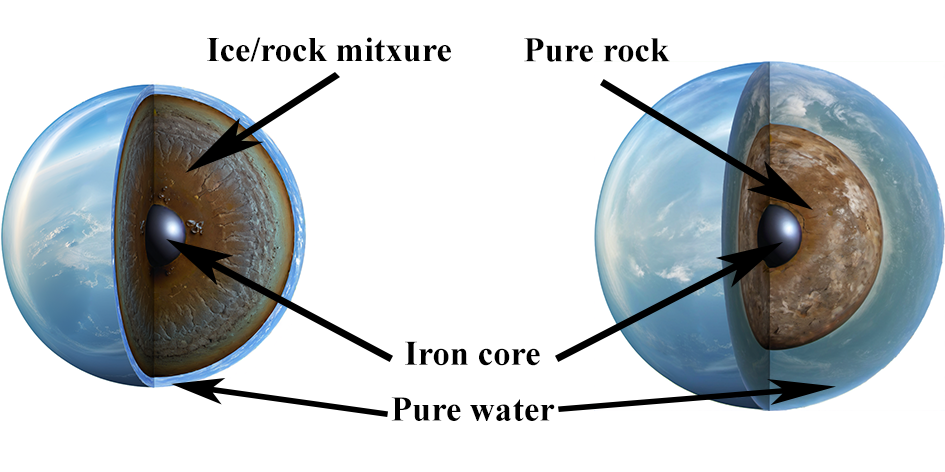- Open University of Israel, ARCO, Israel
Water is expected to be abundant component in planetary interiors, particularly in sub-Neptune planets, whose radii suggest the presence of volatiles in their atmospheres. However, directly observing the precise water mass fraction and water distribution remains unfeasible. In our study, we employ an internal structure code to model planets with high water content and explore potential interior distributions. Departing from traditional assumptions of a layered structure, we determine water and rock distribution based on water-rock miscibility criteria. We model wet sub-Neptunes with an iron core and a homogeneous mixture of rock and water above it. At the outer regions of the planet, the pressure and temperature decrease below the rock-water miscibility point (the second critical point), causing the segregation of water and rock. Consequently, a shell of water is formed in the outermost layers, resulting in a subsequent manifestation as a gaseous water atmosphere. By considering the water-rock miscibility and the gaseous state of water, our approach holds significant implications for estimating the water mass fraction of detected exoplanets.
We model two extreme cases: a fully homogeneous mass-rock envelope surrounding an iron core, and a more traditional three-layer structure where water and rock are separated. In both cases, the outermost water layers form an atmosphere.
With various equilibrium temperatures and masses, assuming different structures, we calculate different radii for various scenarios. Planetary interiors are modeled using a modified version of the Magrahtea code (Huang et al., 2022). With these tools, we model the internal structure of a sample of exoplanets (L 98-59 d, TOI-1685 b, TOI-776 b, TOI-270 d, K2-146 b, K2-146 c).
How to cite: Lozovsky, M. and Vazan, A.: Internal structure of Water-rich planets, Europlanet Science Congress 2024, Berlin, Germany, 8–13 Sep 2024, EPSC2024-150, https://doi.org/10.5194/epsc2024-150, 2024.